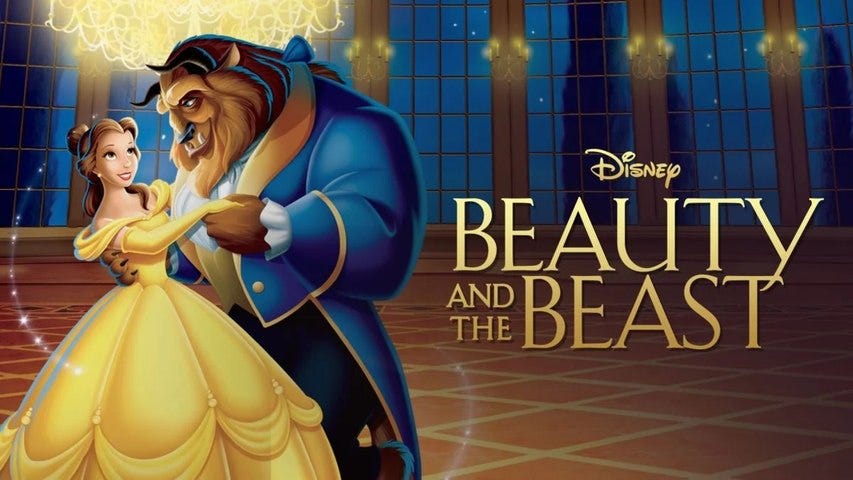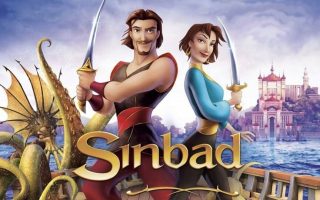kimzolciakwedding.com – Beauty and the Beast (1991) is widely considered one of the most important animated films in cinema history. Directed by Gary Trousdale and Kirk Wise, and produced by Don Hahn, this Disney classic not only earned widespread acclaim but also became a cultural milestone. Based on the French fairy tale of the same name by Jeanne-Marie Leprince de Beaumont, the film captures the magic of transformation—both internal and external—through its timeless story, unforgettable characters, breathtaking animation, and beautiful soundtrack.
The film’s significance goes far beyond its status as a beloved animated feature. Beauty and the Beast played a pivotal role in shaping the future of Disney animation, becoming the first animated film to be nominated for the Academy Award for Best Picture in 1992. It is also a key entry in the Disney Renaissance period, a time when Disney’s animated films saw a dramatic resurgence in both artistic quality and commercial success.
In this article, we will dive deep into the creation, plot, themes, music, characters, animation, and cultural legacy of Beauty and the Beast, exploring why it continues to captivate audiences today.
The Creation of Beauty and the Beast
The Early Development
In the late 1980s, Disney was in the midst of a creative revival, having already seen success with The Little Mermaid (1989) and Oliver & Company (1988). Following the success of The Little Mermaid, Disney was eager to continue the momentum with more ambitious projects. Beauty and the Beast was conceived as part of this effort.
The film’s development began with a search for a suitable fairy tale to adapt into a feature-length animation. The team at Disney considered several options, but Beauty and the Beast stood out because of its rich emotional depth, fantastical elements, and the potential for strong character development. The story’s central themes of love, redemption, and inner beauty resonated with the filmmakers, and they believed it could be reimagined in a way that would appeal to a modern audience.
Adapting the Tale
Although the basic plot of Beauty and the Beast comes from the classic French fairy tale, Disney’s version underwent several changes. The original story, first published in 1740 and then popularized by Leprince de Beaumont in 1756, is a relatively simple narrative about a young woman named Belle who is taken captive by a Beast in exchange for her father’s freedom. Over time, Belle and the Beast develop a deep, emotional connection, ultimately breaking the curse that has transformed the Beast into his monstrous form.
Disney’s version stays true to the core story but introduces a variety of new elements, most notably in the character development of both Belle and the Beast. In the animated film, Belle is portrayed as an independent, intelligent young woman who is out of place in her provincial village. The Beast, too, is given more depth, not simply as a monster but as a character capable of growth, empathy, and redemption. The enchanted objects in the castle, such as Lumière, Cogsworth, and Mrs. Potts, are also original additions that add humor and warmth to the film.
The film’s directors, Gary Trousdale and Kirk Wise, worked closely with screenwriters Linda Woolverton and the musical team to ensure that the adaptation would retain the fairy tale’s charm while adding layers of complexity and modern sensibilities. With these changes, Disney transformed the simple fairy tale into an emotionally resonant and visually stunning film that would captivate audiences worldwide.
The Role of Music
One of the key elements that set Beauty and the Beast apart from other animated films was its emphasis on music. With the talents of composer Alan Menken and lyricist Howard Ashman, the film’s soundtrack became integral to its storytelling. Menken and Ashman had already collaborated on The Little Mermaid and would go on to create some of Disney’s most iconic songs in the Renaissance era.
The music in Beauty and the Beast helped shape its identity, contributing to its emotional resonance. The film’s score includes songs that remain beloved to this day, such as “Be Our Guest,” “Belle,” “Something There,” “Gaston,” and, of course, the titular song, “Beauty and the Beast.” Each of these numbers contributes to the development of the characters and their emotional arcs. The music emphasizes the beauty of the world Belle dreams of and the transformative power of love.
The film’s title song, “Beauty and the Beast,” sung by Angela Lansbury (the voice of Mrs. Potts), is one of the most memorable and poignant moments in the movie. Its slow, sweeping melody captures the film’s theme of inner beauty, and the sequence where Belle and the Beast dance together in the grand ballroom is one of the most iconic scenes in animation history.
Plot Overview: A Tale of Love and Transformation
Belle: A Dreamer in a Provincial Town
The film begins in a small, French village where Belle lives with her father, Maurice, a quirky inventor. While the villagers consider Belle strange for her love of reading and desire for adventure, Belle dreams of a life beyond the confines of her village. She yearns for something more than the routine existence that her fellow villagers seem content with. This desire for something different is expressed in the opening song, “Belle”, where she sings about feeling out of place and wishing for a grander life.
Belle’s life changes when her father, while traveling to showcase his invention, gets lost and is captured by the Beast in his mysterious, enchanted castle. Determined to rescue him, Belle ventures to the castle, offering herself in exchange for her father’s freedom.
The Beast and the Curse
The Beast, whose real name is Prince Adam, was once a handsome and selfish prince who was cursed by an enchantress as punishment for his cruelty. The curse transformed him into a monstrous form and doomed him and his castle’s inhabitants to live as enchanted objects. The only way the curse could be broken was for the Beast to learn to love and be loved in return before the last petal of the enchanted rose fell.
Initially, Belle and the Beast do not get along. The Beast is gruff, angry, and isolated, while Belle is kind, intelligent, and compassionate. Over time, however, they begin to develop a bond as they spend more time together. Belle helps the Beast rediscover his humanity, and in return, the Beast opens up to Belle and shows her the gentler side of his nature. The two characters slowly fall in love, and Belle’s empathy helps the Beast recognize that love is the key to his redemption.
Gaston: The Villainous Suitor
While Belle and the Beast’s relationship grows, the story introduces a second major conflict in the form of Gaston, the arrogant and egotistical hunter from the village. Gaston is determined to marry Belle, despite her lack of interest in him. He represents the external pressures of societal expectations, while the Beast symbolizes inner growth and transformation.
Gaston’s pursuit of Belle leads him to villainous extremes, culminating in a dramatic confrontation with the Beast. His jealousy, manipulation, and inability to understand love highlight the film’s message that true beauty comes from within.
The Climax: True Love’s Triumph
In the film’s climactic moments, Gaston leads a mob to the Beast’s castle in an attempt to kill him. However, Belle realizes that she loves the Beast and races to his side. In the final battle, the Beast is gravely wounded but is saved by Belle’s love and compassion. As the Beast dies in her arms, the curse is broken, and the Beast is transformed back into his human form. The enchanted objects are restored to their original human forms as well.
The film ends with a joyous celebration as Belle and the Prince are reunited, and their love brings about a better future for both the castle’s inhabitants and the villagers.
Themes in Beauty and the Beast
The Power of Love and Redemption
At the heart of Beauty and the Beast is the theme of love as a transformative force. Both Belle and the Beast are in need of transformation—Belle yearns for a life beyond her small town, and the Beast must learn to open his heart to love. Their love transcends external appearances and teaches them to look beyond the surface. The idea that true beauty is found within is central to the film’s message and resonates with audiences of all ages.
Inner vs. Outer Beauty
The film explores the contrast between inner and outer beauty, particularly through the characters of Belle and the Beast. While Belle is outwardly beautiful, it is her intelligence, kindness, and compassion that make her truly captivating. Conversely, the Beast, despite his monstrous appearance, is capable of great kindness and vulnerability. Through their relationship, Beauty and the Beast conveys the idea that physical appearance is fleeting, but love and kindness are what define true beauty.
Selflessness and Sacrifice
Throughout the film, characters make sacrifices for others. Belle sacrifices her freedom for her father’s safety, and the Beast gives up his freedom and happiness to release Belle. These acts of selflessness underscore the theme of sacrifice as essential for true love to thrive.
Society’s Expectations vs. Personal Desires
The film also addresses societal pressures and the tension between personal desires and what is expected by others. Belle is a character who defies the conventional roles expected of her as a woman in a small town. Gaston, on the other hand, represents the shallow societal ideal of beauty and masculinity. Belle’s refusal to conform to these expectations and her eventual relationship with the Beast show the importance of following one’s heart over societal norms.
Animation and Music: A Visual and Auditory Masterpiece
Stunning Animation
The animation in Beauty and the Beast is a true artistic achievement. The film combines traditional hand-drawn animation with groundbreaking techniques, including the use of computer-generated imagery (CGI) for the iconic ballroom scene. The fluidity of the animation, the detailed backgrounds, and the expressive character designs all contribute to the film’s immersive quality. The use of color, particularly in scenes like the enchanted rose and the ballroom dance, evokes emotion and enhances the film’s fairy tale atmosphere.
An Unforgettable Soundtrack
The music in Beauty and the Beast is integral to its emotional impact. Alan Menken’s score is lush and sweeping, while Howard Ashman’s lyrics are poignant and lyrical. Each song moves the plot forward, and the songs are deeply intertwined with the characters’ emotional arcs. “Be Our Guest,” sung by Lumière, is a joyful and exuberant number, while “Beauty and the Beast” conveys the quiet, tender romance between Belle and the Beast. The music creates a sense of magic, wonder, and heartwarming intimacy throughout the film.
Legacy: A Film for the Ages
Beauty and the Beast was a massive critical and commercial success. It earned $424 million worldwide and received multiple awards, including two Academy Awards for Best Original Song (for “Beauty and the Beast”) and Best Original Score. It also became the first animated film to be nominated for the Academy Award for Best Picture, cementing its place in cinematic history.
The film’s cultural impact is enduring. It inspired Broadway adaptations, theme park attractions, and live-action remakes. Belle, as a character, became a role model for many viewers, particularly for young girls, thanks to her intelligence, independence, and love for adventure.
The film remains a timeless classic and continues to enchant audiences with its story of love, transformation, and the power of inner beauty. Beauty and the Beast is a film that will endure for generations, celebrated for its art, music, and the timeless themes it explores.



